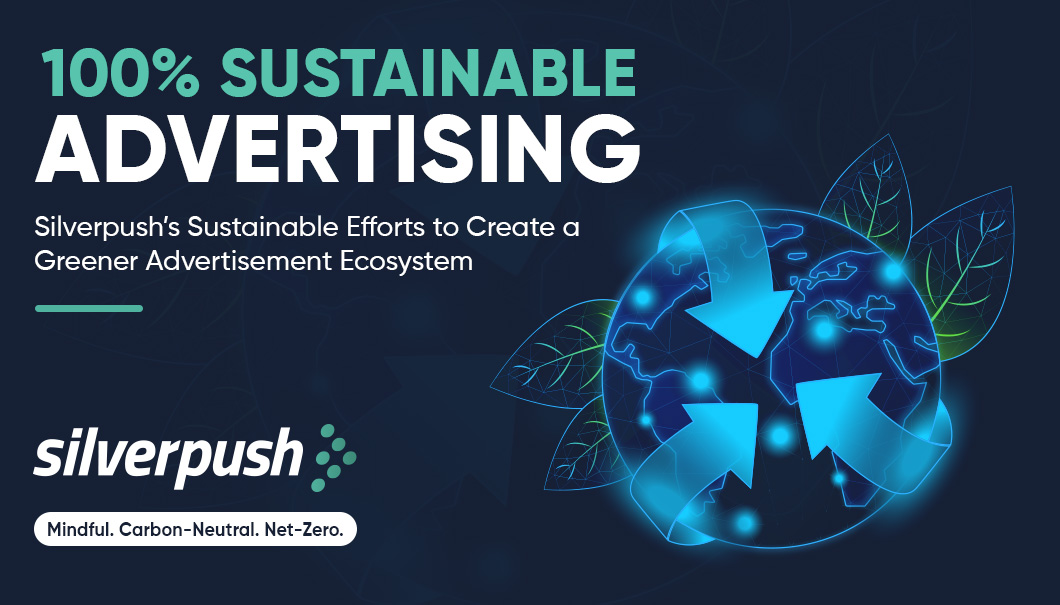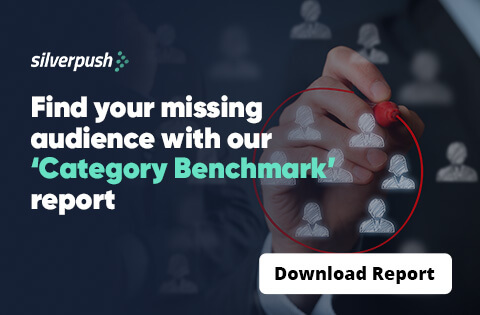Silverpush’s Contextual Approach to Sustainable Digital Advertising | 08 May, 2023

The aviation industry has been labeled as a notorious contributor to greenhouse gas emissions, however, the online advertising industry is no less.
Digital initiatives account for 3.5% of global GHG emissions, surpassing the aviation industry’s 2.5% share, according to the French think tank The Shift Project.
The digital ecosystem now makes up the fastest-growing source of GHG emissions, recording a 6% annual increase each year for the last five years.
The advertising industry requires a new roadmap to connect businesses with customers in the most effective way with the least possible impact on the environment. Advertising contextually can help!
Silverpush, an AI-powered contextual advertising firm, is on a mission to make digital advertising sustainable. We are continuously looking for ways to decarbonize our digital presence by monitoring our carbon consumption in real time.
This blog post will explore the urgent need to pull the emergency brake and prioritize cutting advertising emissions and how at Silverpush, we reduced 2333 tons of CO2 emissions in the past 5 years by advertising contextually.
Key Statistics
- A mock digital advertising campaign produced 323 tons of CO2eq emissions, equivalent to the annual carbon footprint of 16 Americans.
- As per CLICKON, in 2021, nearly 32% of UK brands expressed their goal to achieve carbon neutrality by the end of 2023.
- The internet is responsible for almost 4% of global greenhouse gas emissions, equivalent to 1.6 billion metric tons, while the aviation industry accounts for nearly 5%.
How Digital Advertising is Impacting the Environment?

Reducing Carbon Footprint in the Advertisement Industry
The programmatic supply chain is a complex ecosystem with various components, each contributing to carbon emissions in different ways.

1. Demand Side Platforms (DSP): These enable advertisers to automatically purchase digital ad space from media publishers on an exchange.
2. Supply Side Platforms (SSP): Used by publishers to manage their inventory of available ad space.
3. Data Management Platform (DMP): It is a centralized data warehouse that collects and analyzes data from various sources to ensure that ads are targeted to the right audience. Ad Exchanges are where traders meet to negotiate the price of ad space.
4. Ad Exchanges: A virtual marketplace where buyers and sellers of digital ad space come together to negotiate prices and transact.
However, every aspect of this ecosystem requires servers and devices to operate, generating heat and carbon emissions that contribute to the Scope 3 emissions of brands and advertisers. Scope 3 emissions are those that result from activities outside of a company’s direct control but still impact its value chain. Even unsuccessful bids for ads that are not delivered contribute to the carbon footprint through media storage, computing power, and network traffic.
Also read: Silverpush’s Cookieless AI Solutions: Saving 1000 Tons of CO2eq in Advertising Campaigns
Strategies to Reduce Carbon Emissions in the Advertisement Industry

Here are some strategies that can be implemented to reduce the carbon footprint of a digital ad campaign:
1. Use Lightweight Files: DSPs, SSPs, and ad servers consume a significant amount of energy to process files for ad campaigns. To reduce energy usage and carbon emissions, advertisers can use lighter files.
2. Involve Vendors: Advertisers can collaborate with their vendors to adopt sustainable practices like using renewable energy-powered servers, file compression, and offsetting carbon emissions.
3. Timing of Ad Campaigns: Advertisers can schedule ad campaigns during off-peak hours when electricity is generated from sustainable sources, such as solar energy.
4. Green Agencies: Advertisers can partner with agencies that prioritize environmental protection and take measures to reduce their carbon footprint.
5. Green Platforms: By adopting green AdTech platforms and optimizing demand-path and supply-path, advertisers, agencies, and publishers can minimize carbon emissions.
6. Limit ad density: Publishers can adopt stricter ad policies to ensure that only higher-yielding ads run on their pages, reducing the overall number of ads and consequently, energy consumption.
7. Optimize AdTech platform performance: AdTech vendors can optimize their infrastructure setup, resulting in cost savings and reduced energy usage and carbon emissions.
8. Moving Towards Contextual Advertising: Contextual solutions significantly reduce multiple grams of carbon footprint and energy consumption every second due to their ability to target without the use of cookies and relevant audience targeting.
Silverpush’s Sustainability Efforts in Digital Advertising with Contextual Targeting
Storing and processing large amounts of data can have a significant impact on carbon emissions.
The generation of carbon dioxide (CO2) is often associated with the energy consumption required for data centers and servers to operate. Therefore, it is essential to consider the environmental impact of activities such as syncing cookies, audience data collection, and retargeting users, which all involve significant computation and data storage.
Therefore, the more data that is stored and processed, the greater the carbon footprint. To reduce their environmental impact, organizations should minimize unnecessary data collection and processing by carefully considering their data storage and processing practices.
How Silverpush is Becoming Carbon-Aware?

- Silverpush’s contextual advertising approach involves collecting data from third parties and integrating it into campaigns.
- To minimize their environmental impact, we have implemented a real-time monitoring system to optimize carbon consumption.
- By analyzing metrics of carbon consumption, they can identify which creative is consuming more emissions and make necessary adjustments.
- One major advantage of Silverpush’s contextual solutions is it is completely cookieless, and does not require large amounts of data storage to display relevant ads to their target audience.
- The AdTech pipeline is a complex system that involves multiple components, including data storage, processing, and delivery, which all contribute to carbon emissions. Additionally, serving advertisements often requires multiple middleware services.
- Similarly, some publishers have complex technical requirements to deliver their content, which can result in a significant amount of carbon emissions.
Way Forward
The digital advertising industry has a significant impact on the environment, contributing to global greenhouse gas emissions. As a responsible advertising firm, Silverpush recognizes the urgency of cutting down advertising emissions and has taken a strong stance toward promoting sustainability. By adopting contextual advertising and real-time carbon monitoring, Silverpush has successfully reduced its carbon footprint, making advertising more sustainable. Join us to build a better, greener world for everyone.

BLOGS
Why Granular Insights Are Critical for Ad Campaign Optimization
When your ad campaign ends and the dashboard lights up with a “great” VTR or a CTR that’s above average, you celebrate, right? But then comes the pause. What actually made it work? Was it the creative? The audience? The time of day? The context of the video? Most platforms ...

BLOGS
YouTube CTV Advertising: Bigger Screens, Bigger Impact
YouTube has always been a powerhouse for brands looking to connect with audiences. With over 2 billion monthly active users, it’s a platform that reaches people everywhere, on their phones, tablets, and laptops. However, the way people watch YouTube today is very different from how it used to be in the ...

BLOGS
Silverpush Unveils Pre-Bid Brand Safety and Contextual CTV Segments
The CTV ad market is booming: global CTV ad spending is estimated to reach $30 billion this year and more than 80% of US households are using CTV devices. The biggest channel for CTV streaming is YouTube, followed by Netflix and Hulu. Completion rates for ads are high and an ...







